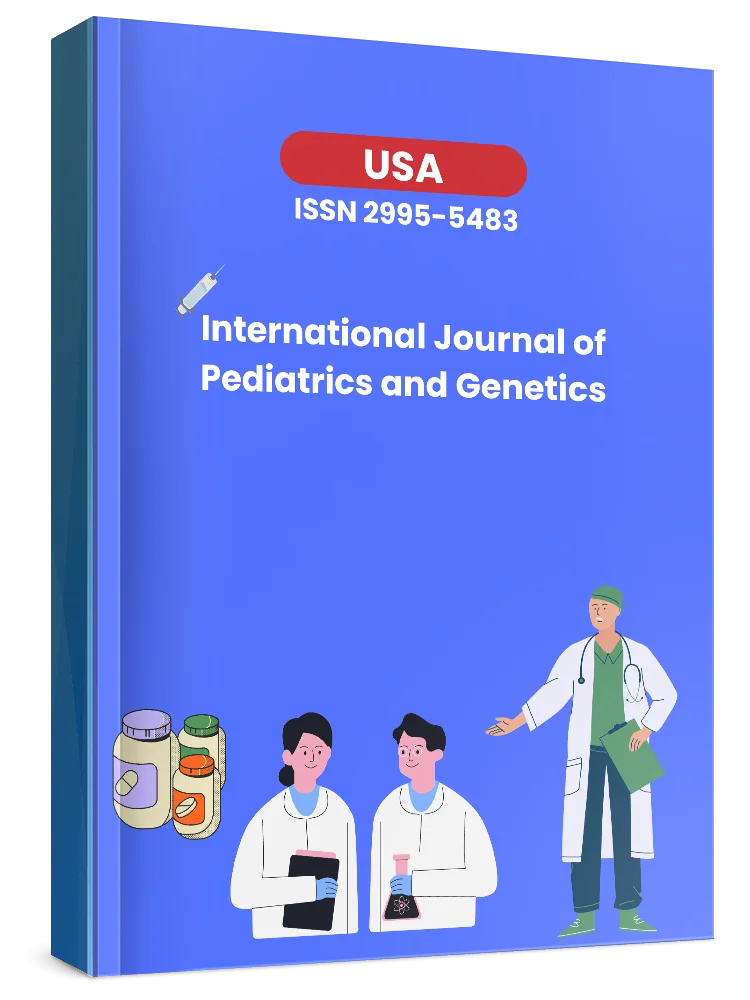Nursing Practice Toward Transition Oral Feeding Care
Keywords:
Preterm Neonates, Oral Feeding, NursesAbstract
Researchers evaluated neonatal nurses' knowledge, methods, and attitudes towards transitioning preterm infants to oral feeding. Fifty-four nurses who worked in the infants' ward at Al-Amara Hospitals (A-Hakeem Teaching Hospital) in Iraq were evaluated between June and December 2024. The morning shift crew was chosen at randomly a cross-sectional investigation. The trial has been authorized by the hospital's Ethics Commission. According to a literature analysis of prior research on oral feeding transition, tools in the structure of a questionnaire were developed to assess the importance of nursing practice in transitioning oral nutrition care for premature newborns. Nurses' practices are scored and rated as either good (10-18) or poor (0-9). This survey reveals that the age range between 25-29 has the highest number of nurses (33.3%), whilst the age range between 30-34 has the lowest number of nurses (5.6%). According to gender, female nurses outnumber male staff nurses (12 female healthcare professionals to 6 male nurses). In terms of educational level, nurses with a school of nursing accounted for 33.3% of the study group, six nurses had 3-4 years of experience in pediatric nursing, seven nurses had 1-2 years of experience in the NICU, and 44.4% of the study group had no NICU training courses. The study identifies gaps in neonatal nursing expertise and procedures regarding the transition to oral feeding in premature babies. Enhancing baby care and its results necessitates targeted educational interventions and ongoing support to bridge these gaps. The findings indicated that a vast. A large number of nurses lacked adequate knowledge of critical areas such as as oromotor operation, the suck-swallowbreathe everyday life, and nonnutritive sucking. These knowledge gaps could affect what nurses may give. Staff members in intensive care units for newborns should use evidence-based techniques such skin-to-skin care, non-nutritive the field of nursing, test weight, alternate feeding methods, and nipple shields to ease the transition to complete oral eating.
References
[1] N. D. Embleton and M. Fewtrell, “Complementary feeding in preterm infants,” Lancet Global Health, vol. 5, no. 5, pp. e470–e471, 2017.
[2] C.-E. Briere, J. McGrath, X. Cong, and R. Cusson, “State of the science: a contemporary review of feeding readiness in the preterm infant,” J. Perinat. Neonatal Nurs., vol. 28, no. 1, pp. 51–58, 2014.
[3] J. M. Perrin, L. E. Anderson, and J. Van Cleave, “The rise in chronic conditions among infants, children, and youth can be met with continued health system innovations,” Health Aff., vol. 33, no. 12, pp. 2099–2105, 2014.
[4] L. Crowe, A. Chang, and K. Wallace, “Instruments for assessing readiness to commence suck feeds in preterm infants: effects on time to establish full oral feeding and duration of hospitalisation,” Cochrane Database Syst. Rev., no. 8, 2016.
[5] S. Fucile, E. G. Gisel, D. H. McFarland, and C. Lau, “Oral and non-oral sensorimotor interventions enhance oral feeding performance in preterm infants,” Dev. Med. Child Neurol., vol. 53, no. 9, pp. 829–835, 2011.
[6] B. M. Barkemeyer, “Discharge planning,” Pediatr. Clin., vol. 62, no. 2, pp. 545–556, 2015.
[7] C. Lau, “Maturation of infant oral feeding skills,” in Pediatric Dysphagia. Cham, Switzerland: Springer, 2018, pp. 17–32.
[8] T. Griffith, R. White-Traut, and L. W. Janusek, “A behavioral epigenetics model to predict oral feeding skills in preterm infants,” Adv. Neonatal Care, 2020.
[9] P. F. Bourin, M. Puech, and V. Woisard, “Pediatric aspect of dysphagia,” in Dysphagia. Cham, Switzerland: Springer, 2017, pp. 213–236.
[10] I. Morag, Y. Hendel, D. Karol, R. Geva, and T. Strauss, “Transition from nasogastric tube to oral feeding: The role of parental guided responsive feeding,” Front. Pediatr., vol. 7, art. 190, May 2019.
[11] D. Silberstein, R. Geva, R. Feldman, J. M. Gardner, B. Z. Karmel, H. Rozen, and J. Kuint, “The transition to oral feeding in low-risk premature infants: Relation to infant neurobehavioral functioning and mother–infant feeding interaction,” Early Hum. Dev., vol. 85, pp. 157–162, 2009.
[12] B. A. Girgin and D. Gözen, “Turkish neonatal nurses’ knowledge and practices regarding the transition to oral feeding in preterm infants: A descriptive, cross-sectional study,” J. Pediatr. Nurs., vol. 53, pp. e179–e185, Jul. 2020.
[13] A. Hendy et al., “Assessing neonatal nurses: transitioning preterm infants to oral feeding—a multicenter cross-sectional study,” BMC Nurs., vol. 24, no. 1, p. 32, 2025.
[14] C. Pratiwi, H. Purwandari, and D. Purnamasari, “The effects of the early oral feeding on preterm infant’s length of hospital stay,” in Proc. AIP Conf., 2023, vol. 2586, no. 1. Melville, NY, USA: AIP Publishing.
[15] F. Fathi, W. Ouda, and M. Kunswa, “Nurses’ practices for sensorimotor stimulation to enhance oral feeding of preterm infants: An assessment study,” Egypt. J. Health Care, vol. 13, no. 3, pp. 314–323, 2022.
[16] S. Naz, W. Humayoun, and M. Afzal, “The transition time from gavage feeding to full oral feeding in preterm infants at the Children's Hospital Lahore,” Int. Res. J. Modernization Eng. Technol. Sci., vol. 4, no. 9, 2022.
[17] A. Beissel et al., “Impact of a nurse education programme on oral feeding in a neonatal unit,” Nurs. Crit. Care, vol. 29, no. 2, pp. 287–295, 2024.
[18] Y. Hussein and C. Csíkos, “The effect of teaching conceptual knowledge on students’ achievement, anxiety about, and attitude toward mathematics,” Eurasia J. Math. Sci. Technol. Educ., vol. 19, no. 2, 2023.






